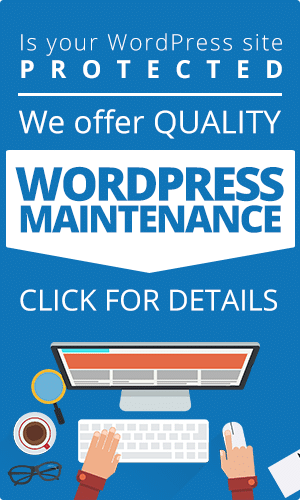How To Optimize Your Website For Better Search Engine Rankings
Is your website appearing in the SERP’s (search engine results pages) when you search for topics related to your industry? If not, you may find this article very helpful in achieving the results you are looking for. I am going to walk you through the steps on how to optimize your website for better search engine rankings. If you follow these steps on your website, over time you should see much better rankings in the major search engines such as Google, Bing and Yahoo. Ok, so let’s get started on the path to helping you climb the search engine ranking ladder!
Step 1: Choose Your Keyword/Phrase
This is by far the most important step in the process! You want to make sure to choose a keyword or phrase that a decent number of people are searching for, but at the same time, you want to choose one that doesn’t have a million other websites competing to rank for the same keyword/phrase. I recommend using Google’s Keyword Planner Tool to help you find the perfect keyword or phrase to use for your web pages. When you do a search, you want to focus on the Average Monthly Searches and Competition fields. I like to sort the results by competition (from low to high), and then find a keyword with low competition and a high number of average monthly searches.
Step 2: Set Your Page Title and URL
Now that you have chosen the perfect keyword to help you skyrocket up the search engine rankings ladder, it’s time to begin using that keyword in all the right places. The first place you want to use it is in your page title. You will see that my page title for this page is How To Optimize Your Website For Better Search Engine Rankings, this is the keyword phrase that I am trying to rank this page for. Next you want to make sure that your keyword/phrase is used in the URL of your page (with a “-” between words), you will see that the URL to this page is https://inovativhosting.com/how-to-optimize-your-website-for-better-search-engine-rankings. If you are using a content management system such as WordPress, it may give you an option to automatically set this using your page title, otherwise you will need to code it into your URL.
Step 3: Set Your Meta Tags (Title and Description)
Next you will need to set your Meta Title Tag. This is the title that will be shown in the SERP’s when someone searches and finds the link to your pages. The title tag is one of the most important factors when it comes to SEO and if written correctly, can really help with your search engine rankings. I have seen many different suggestions on the best way to for mat the title tag, but I have always gotten the best results by having two or three keyword/phrases separated by a “|” symbol. For example, I am using “How To Optimize Web Pages For Better Search Engine Rankings | SEO How To” for the title of this page. You always want to have your most important keyword/phrase at the beginning of your title, and repeat it again towards the end if possible. Also, if you are trying to target your local audience, you want to make sure to include your city and state.
Next, you will need to set your Meta Description Tag. This is the desription that will be displayed under your title in the SERP’s. The description has very little to do with your actual rankings, but can be used to entice people to click on your links. This will have an effect on your search engine rankings, if Google sees that people are clicking on your links and finding your information useful, Google will reward you with better rankings. So, you want your description to explain what the user will find if they click your link and why they should.
Step 4: Using Your Keyword/Phrase In All The Right Places
There are certain places in your page content that you want to make sure to have your keyword/phrase. This will help show the search engines exactly what your page is all about and what search queries your pages should be displayed for.
The first place you want to try to have your keyword/phrase is in a heading (h1) tag at the top of your page. If you’re not familiar with heading tags, you can learn more about them here. You want to use caution with this, and only do it if it fits in naturally with the rest of the content on your page. The most important thing to remember is that you’re writing for your users and not just the search engines, so don’t add an h1 at the top of your page if it doesn’t make sense to do so.
The next place you want to add your keyword/phrase is in the first paragraph, or introduction, on your page. I also like to set this one to be bold.
Next, you will want to repeat your keyword/phrase a few times throughout your page content. The number of times you want to repeat it will depend on the amount of content you have on the page. You want to have it enough times to let the search engines know that this is what your page is about, but make sure not to practice keyword stuffing. If Google feels that you are keyword stuffing, they may penalize your rankings or possibly even ban your website from the SERP’s.
The next place you want to make sure to have your keyword/phrase is in the alt tag of an image. Search engines are not able to detect what an image is of without having an alt tag, so this is another great way to tell the search engines what your content is about. For those of you who are not familiar with images and alt tags, you can learn more about alt tags here. If you’re using a content management system such as WordPress, it probably provides an easy way to add your alt tags. Otherwise, you will need to code them into your image tags.
Another major factor for search engine rankings in the number of backlinks you have to your website. A backlink is a link from another website back to yours. When somebody links to your website, it shows the search engines that they found your website useful and indicates that you’re an authority on that topic. There are many different ways to obtain backlinks – here are a few –
- Guest Blogging
- Answering questions in forums such as Quora, with a link back to your website.
- Commenting on other blog articles with a link back to your site.
- Manually reaching out to other website owners and asking them to link to your website.
- Purchase a Link Blast
There you have it. If you follow these steps on how to optimize your website for better search engine rankings, you should find your pages on the fast track to climbing the search engine rankings.
Don’t have time to do this on your website? Contact us today and we would be happy to take care of it for you with our top-notch SEO services!
I hope you enjoyed this article and found it helpful!





